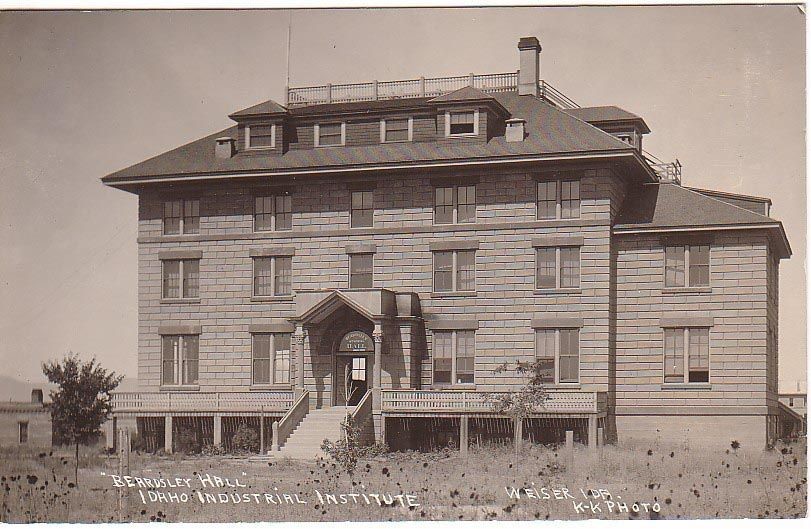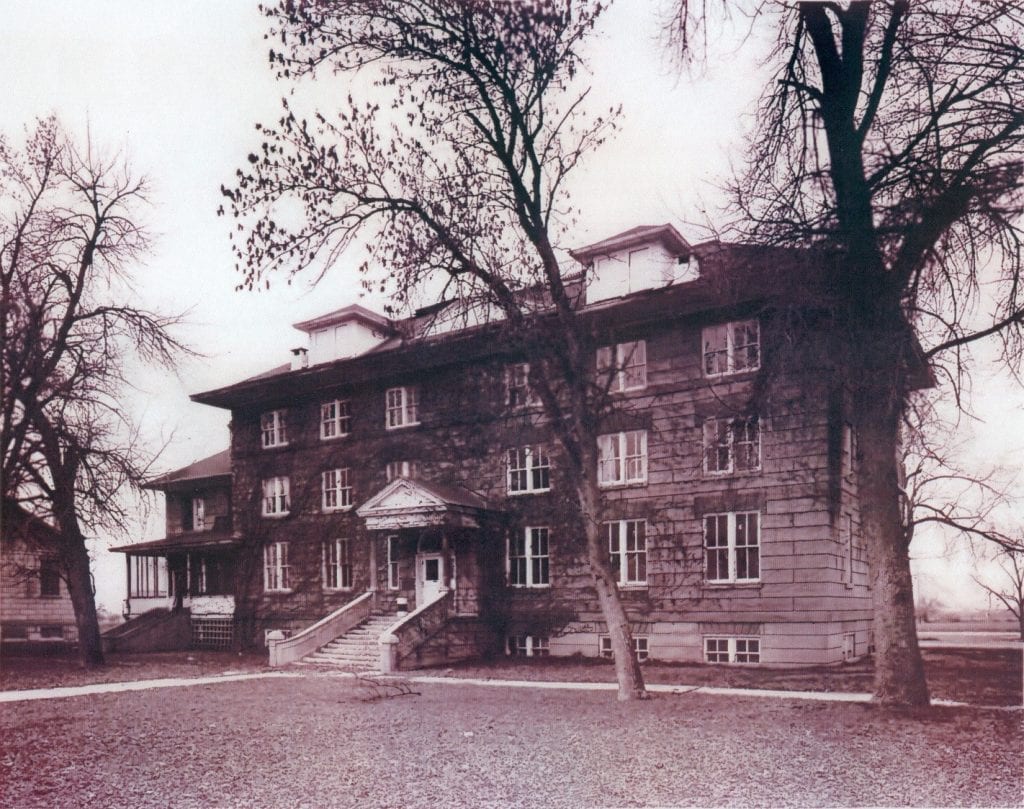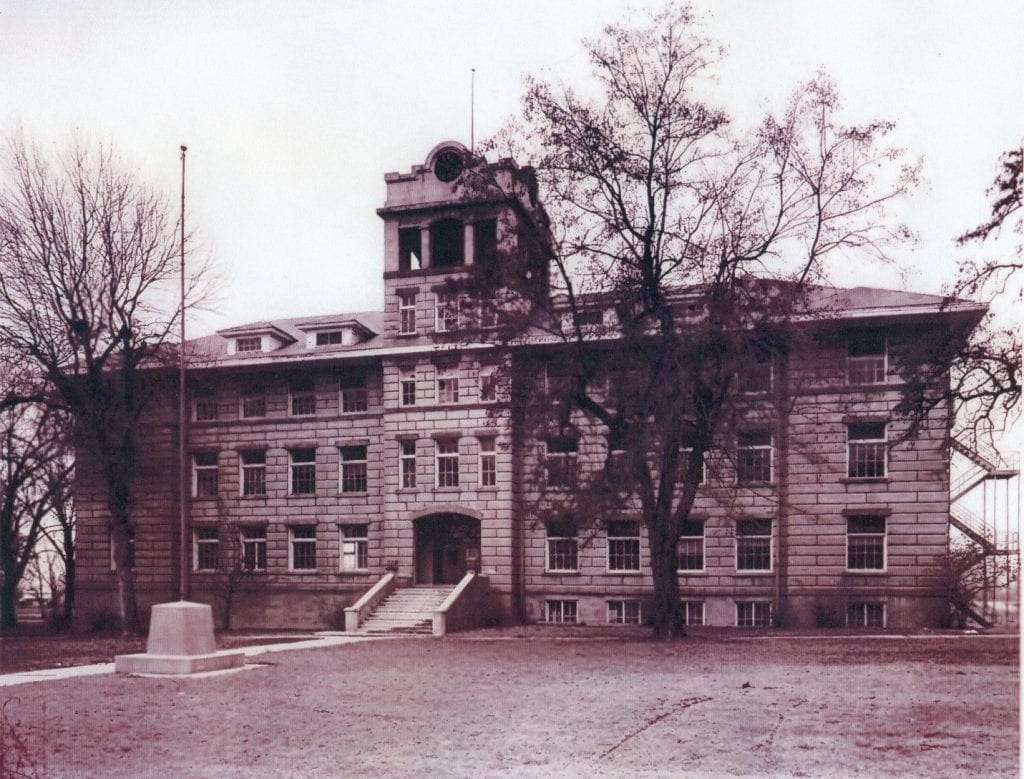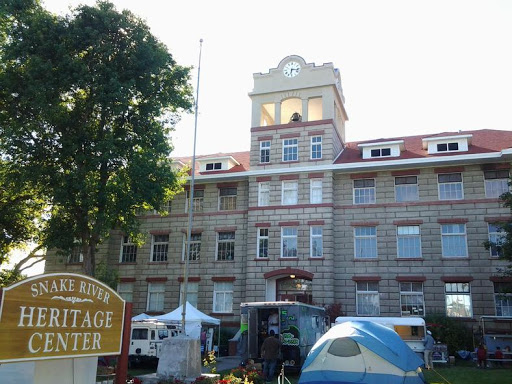| A few weeks ago we visited Cal Farley’s Boys Ranch in Texas. Today we will learn about a different type of agricultural school further west – the Idaho Industrial School. It is a pleasure to welcome back Dr. Jim Connors from the University of Idaho as the guest columnist. So take it away Dr. Connors.
The Idaho Industrial School During the late 19th century, the public education system in the United States was evolving. Many parts of the country still had not developed separate elementary, middle, and high schools. Central High School in Boise was the only high school in the Idaho Territory when it was established in 1882, eight years before Idaho became a state in 1890 (North End, n.d.). In 1892, there were only three high schools across the entire state of Idaho (Stimson, 1942). As public education was still developing, private citizens saw the need for formal education for rural youth across the country. In 1894, the Reverend Edward Paddock arrived in the small town of Weiser, Idaho to organize the Congregational Church. Years earlier Paddock dreamt of establishing a school for poor young men and women where they could get a good education, learn a trade, and pay their expenses by working at the school. The first school Paddock established was the Weiser Academy. However, he eventually broke with the academy over a disagreement with the school’s trustees and faculty. The trustees and faculty did not support Paddock’s vision of starting a vocational training program at the school. Paddock then established the Idaho Industrial Institute in 1899. Paddock believed schools should educate “the hand and heart as well as the head” of the students. The school became a boarding school for rural youth who did not have access to a high school in their area. The motto of the Idaho Industrial Institute was “An education and trade for every boy and girl who is willing to work for them.” Campus Buildings The institute’s campus took shape on 15 acres of land owned by Paddock just outside the small town of Weiser, Idaho. The first buildings on campus were boarding houses for the staff and students. Beardsley Hall was completed in 1907 and served as a girl’s dormitory for 40 girls. The building also included a dining hall, the school’s chapel, and a gymnasium.
Figure 1: Beardsley Hall (1907) In 1909, Slocum Hall was built for $30,000 and served as a boy’s dormitory. The building also included a swimming pool, library, and reading rooms. Eventually a Carnegie Library was built in 1919 to serve both the institute and the town of Weiser. When the library was completed, three evergreen trees were planted in front of the building in honor of three institute students who were killed in action during World War I.
Figure 2: Slocum Hall (1909) The largest building on campus was H.M. Hooker Memorial Hall, built in 1924. The building was notable for the five-story clock tower over the main entrance. The building included administrative and faculty offices, 22 recitation rooms, and a large auditorium.
Figure 3: H. M. Hooker Memorial Hall (1924) In 1929, Billings Memorial Gymnasium was built on campus. It contained a swimming pool and basketball courts. At that time, it was considered the finest high school gymnasium in the state of Idaho. Figure 4: Billings Memorial Gymnasium (1929) The Broadhead Shop building was built to provide space for the manual arts- vocational education training programs offered by the institute. The shop building housed a blacksmith’s shop, machine shop, carpenter and woodworking shops. Another adjacent building was a tower structure that contained a water tank that served as a reservoir for the campus and also included a meat shop and smoke house to produce the food served in the dining hall. Another building on campus included the heating plant for the campus along with chemistry and physics laboratories used for instruction. All school buildings were erected with the help of student labor. Curriculum Students enrolled at the institute completed both a college preparatory curriculum and a vocational education track. Students either completed a manual training program, presumably for boys, or a domestic science program, presumably for girls. In addition, all students were required to take a non-denominational Bible class and participate in 1 hour of exercise each day either in the gymnasium, on the tennis courts, or by hiking. Vocational subjects taught at the institute included: carpentry, blacksmithing, dairying and farming, dressmaking, cooking, and housekeeping. The institute’s boarding department was staffed by female students at the school. The girls took care of the cooking, baking, washing, waiting on tables, and upkeep of the dormitory. It was also an expectation that every woman should be able to make their own graduation dress by the time they graduated from the institute. A unique characteristic of the Idaho Industrial Institute was that students were required to work between 2.5 and 5 hours per day at some kind of manual labor on campus. This could include working for the domestic department for the girls or working on the farm or in one of the industrial shops for the boys. This manual labor helped pay for the students’ tuition, room, and board while attending the school. Agriculture One of the areas of instruction at the Idaho Industrial Institute was the Agriculture Department. The December 1913 edition of the Idaho Industrial Institute Gleaner periodical described the purposes of the Agriculture Department (Propps, 1913): 1. To outline and present a thorough, systematic course in agriculture, such as is best suited to a school of this kind. 2. To suggest and aid in carrying out such practices about the ranch, in the care of the live stock [sic] etc. as will conform to the principles that we teach in the class room [sic]. While the main campus buildings sat on 15 acres in Weiser, Idaho, the school eventually owned 2,000 acres of land of which 600 acres was under cultivation. The school had a dairy farm operation and creamery, swine herd, poultry flock, livestock, and grain production. There was a large greenhouse that was used to raise flowers and lettuce that was sold or served in the dining hall. The dairy operated a milk wagon staffed by “milk boys” or “dairy maids” that delivered dairy products throughout the town of Weiser. This operated until it was determined that it negatively affected the students’ academic performance. The school also taught the most advanced agricultural practices available during the first decades of the 20th century. The dairy operation included youth showing Holstein cattle at local fairs. The November 1921 edition of the Holstein Friesian World magazine included an article titled “Holsteins at the Idaho Fairs” (Cammack, 1921). The article listed numerous awards won by institute students who were showing their Holstein cattle at Weiser Holstein Show and other local fairs in western Idaho. The students in the Agricultural Department eventually decided to form their own Agricultural Club at the school (Agricultural Club, 1913). The purposes of the Agricultural Club were as follows: 1. To stimulate interest in and to further and promote the interests of the department of agriculture. Enrollment In 1903, the State of Idaho opened its own school named the Idaho Industrial Reform School in St. Anthony. The school changed its name to the Idaho Industrial Training School in 1905. For the next 10 years the two schools; Idaho Industrial Institute (private) and the Idaho Industrial Training School (public) were often confused with each other. As a result the Idaho Industrial Institute changed its name to the Intermountain Institute in 1915. The Intermountain Institute enrolled approximately 100 students each year. It usually had a waiting list of at least that many students wishing to attend the school. Students had to be at least 16 years of age to enroll. The school drew students from at least eight states and one foreign country. Over the course of the 34 years that the school operated, it educated over 2,000 students. The school was the largest private enterprise in the small town of Weiser and by 1914 had the largest payroll in the county, exceeding $2,000 per month, a considerable sum for 1914 rural Idaho. Closure After 34 years of operation, the school closed in 1933 as a result of the depression. The campus sat empty until 1939 when it was deeded to the public schools to be operated as a vocational training school under the direction of the National Youth Administration. It operated as a public vocational training school until 1943. After World War II, the Intermountain Institute tried to reopen to no avail. The campus was given to the city of Weiser to be operated as Weiser High School. In 1967, the town built a new high school and abandoned the buildings. Over the past 50 years the remaining buildings housed a heavy equipment school and is currently home to the Snake River Heritage Center and the Weiser Museum (Figure 5). Figure 5: Snake River Heritage Center – formerly the H. M. Hooker Memorial Hall The Idaho Industrial School, like other schools across the country, made a significant contribution to the education and development of rural youth in the Pacific Northwest. No one will ever know the impact the school had on the thousands of students who walked the halls from 1900 to 1934. Teaching ideas 1. Research the first private schools in your state to determine if they taught vocational/industrial education subjects. 2. Determine the first public high schools that existed in your state to determine where they were located and the curriculum offered. Did they offer vocational/industrial education subjects. References: Agricultural Club (1913). Agricultural Club. Idaho Industrial Institute Gleaner, 14(2), p. 12. Weiser, ID: Idaho Industrial Institute. Cammack, F. R. (1921, Nov. 26). Holsteins at the Idaho fairs. Holstein Friesian World, 18(48), p. 37. French, H. T. (1914). History of Idaho: A narrative account of its historical progress, its people, and its principal interests. New York: The Lewis Publishing Company. Idaho State Historical Society (n.d.). Intermountain institute. Retrieved from http://history.idaho.gov/wp-content/uploads/2018/09/Intermountain_Institute_79000811.pdf Propps, D. (1913). The agricultural department. Idaho Industrial Institute Gleaner, 14(2), p. 12. Weiser, ID: Idaho Industrial Institute. Stimson, R. W. & Lathrop, F. W. (1942). History of agricultural education of less than college grade in the United States. Washington, DC: US Government Printing Office. The North End (n.d.) Boise High School. Retrieved from https://northend.org/north-end-schools/boise-high-school/ |





